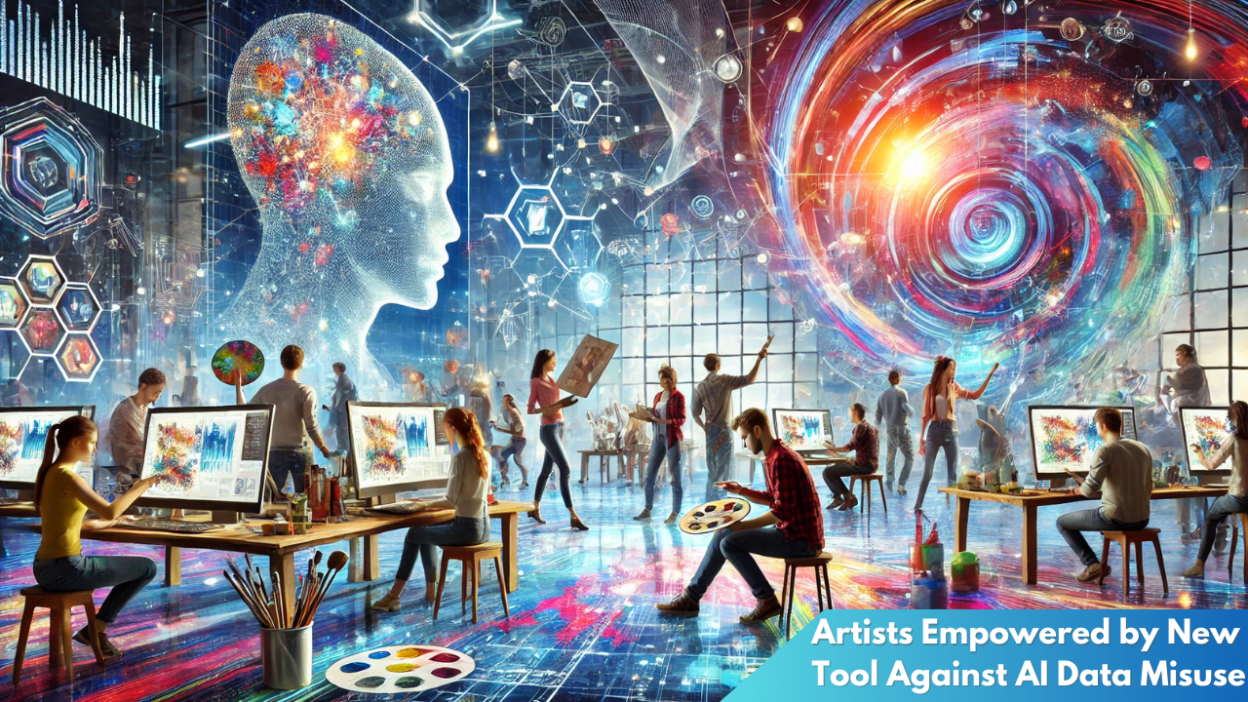In recent years, the rapid advancement of artificial intelligence (AI) tools has revolutionized the creative industry, offering novel ways to produce and manipulate art. However, alongside these advancements, artists have faced a growing concern: the misuse of their works as data for training AI without consent. To combat this, a new tool has emerged, empowering artists to safeguard their creations and reclaim control over their intellectual property. This development marks a significant step forward in protecting the rights of artists in the digital age.
Artists Harness Emerging Tool Against AI Data Misuse
For artists, the unauthorized use of their works as training data for AI systems has become an alarming issue. With AI-driven platforms scraping the internet for images, music, and written content, many creators have found their creations being used without permission or compensation. This misuse not only undermines their artistic rights but also raises ethical questions about the exploitation of creative labor. In response, a recently developed tool offers a beacon of hope, allowing artists to take back control over how their works are used in the AI landscape.
This innovative tool employs blockchain technology to create a verifiable record of an artist’s work, effectively securing it against unauthorized use by AI systems. By logging their creations on a decentralized ledger, artists can establish clear ownership and set conditions for their usage. This means that any AI tool attempting to access a creator’s work must first obtain permission, ensuring that artists are compensated and acknowledged for their contributions. Such a technological advancement provides artists with a much-needed mechanism to protect their intellectual property rights in an era where AI technologies are pervasive.
Moreover, this tool empowers artists by providing them with the means to track the usage of their work across digital platforms. By monitoring how their creations are being utilized, artists can identify instances of misuse and take appropriate action. This capability not only helps in safeguarding their current portfolio but also deters potential misuse, thereby allowing artists to focus on what they do best: creating art. In this way, the tool not only acts as a protective measure but also fosters a more transparent and fair ecosystem for artists in the digital domain.
New Measures Boost Creative Control and Protection
The introduction of this tool is a game-changer for the creative industry, offering artists new avenues to assert their rights and control over their work. By integrating this technology, artists can specify the terms under which their work can be used by AI developers, ranging from permissions for non-commercial research to licensing agreements for commercial use. This newfound ability to set boundaries and conditions empowers artists to engage with AI technologies on their own terms, ensuring their art is respected and valued appropriately.
Further enhancing creative control, the tool also incorporates advanced watermarking techniques that are imperceptible to the human eye but detectable by AI systems. These digital watermarks serve as an additional layer of protection, embedding creator information directly into the work itself. This ensures that even if the work is distributed across various platforms, the original artist can be identified, and any unauthorized use can be tracked back to its source. Such measures help to prevent the misappropriation of artistic content, thereby giving artists peace of mind as they navigate the complexities of the digital world.
As artists increasingly adopt these tools, the broader implications for the industry are profound. The ability to protect and manage creative content more effectively is likely to encourage more artists to explore AI as a medium, knowing that their rights are safeguarded. Additionally, it may prompt AI developers to engage more collaboratively with artists, fostering innovation that respects artistic contributions. By reinforcing the principles of ownership and consent, these measures are paving the way for a more equitable and sustainable future for art in the digital era.
The emergence of this tool represents a pivotal moment for artists and the creative industry at large. By providing a robust framework to protect intellectual property rights, artists are now better equipped to navigate the challenges posed by AI data misuse. This development not only reinforces the importance of safeguarding artistic integrity but also opens up new opportunities for collaboration between artists and AI developers. As technology continues to evolve, such tools will be crucial in ensuring that creativity is celebrated and respected, empowering artists to thrive in the digital age.



